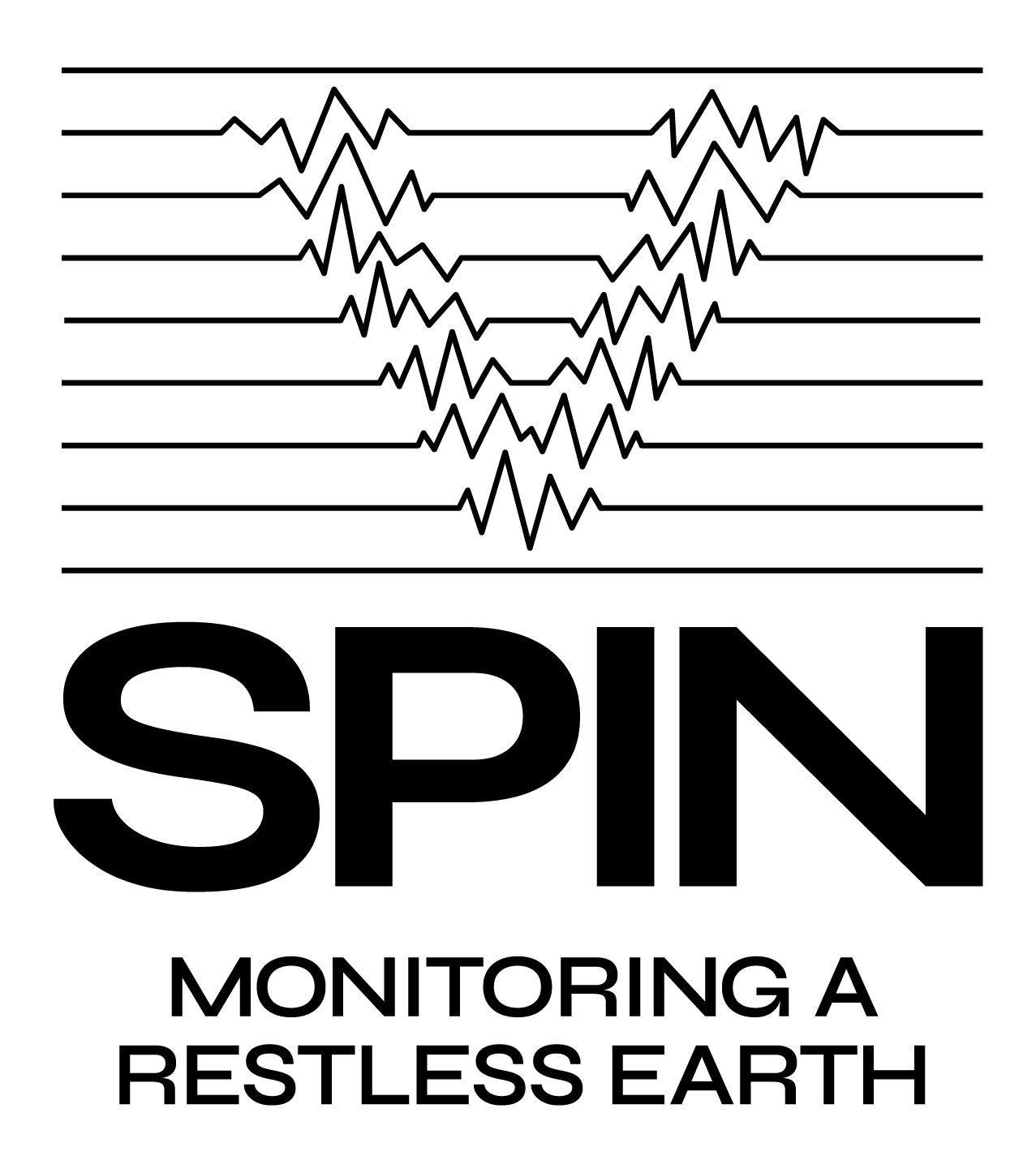
SPIN-ITN: Seismological Parameters and INstrumentation
SPIN is an Innovative Training Network (ITN) funded by the European Commission under the Horizon 2020 Marie Sklodowska-Curie Action (MSCA).
Keep up to date about SPIN activities! Subscribe to the SPIN-info mailing list here
Subscribe to the SPIN Youtube channel to know when new training videos are uploaded.
Monitoring a Restless Earth
The seismic wavefield carries the imprint of material it crossed. We now understand that seismic wavefields alter the material when they pass through it and that these changes are measurable. This is important, because the dynamic response of Earth’s material directly afects our societies: geomaterial alterations are associated with many natural hazards, such as volcanic eruptions, landslides, earthquakes, and the structural health of civil structures such as bridges and buildings. Traditional seismic sensors - global and regional networks of seismometers - provide us with high temporal resolution, but sparse spatial resolution.
Right now, new sensing technologies (fiber-optic cables (DAS), large-N arrays, rotation sensors) are emerging that can give us much more detailed spatial information about how the seismic wavefield behaves. This means that we can study changes in local material properties, and investigate complex behavior of materials as they deform under small strain. These sensing technologies are reaching a level of maturity where they can be incorporated into common seismological observation practice.
For this new era of seismological instrumentation and observation fundamentally new skills need to be developed. In SPIN, we will train the next generation of scientists to develop novel views about the dynamic behaviour of Earth materials, and in particular how to observe them with the revolutionary new sensing systems at hand. It is currently enigmatic how to combine these sensor types to optimize resolution power. This research and training will impact the way we understand solid Earth processes, how we interrogate the Earth’s geomechanical behavior, and the way we forecast natural hazards.
The overarching goal of the SPIN network is to advance seismic observation, theory and hazard assessment alike by:
1) fully integrating the latest ground-motion sensing technology. We will develop survey designs that optimise this novel technology to improve the monitoring of geohazards. In SPIN, we devise laboratory experiments to test new physical models of wave propagation that include the complex response of Earth materials to stress, and perform numerical simulations to predict their effects across scales in the real Earth. We apply the new models of wave propagation, and the field observations from novel sensor types, to detect and exploit time-dependent material changes to improve forecasting of real emerging natural hazards.
2) creating a fertile environment to train a new generation of unique European researchers who can incorporate new sensor types into widespread, societally-relevant applications. In SPIN, we will educate broad and versatile researchers – in fundamental theory, the forefront of ground motion sensing technology, in monitoring system design, and in the interpretation and mitigation of natural hazards.
SPIN will, for the first time, focus on training 15 Early-Stage Researchers (ESRs) in emerging measurement technologies, and the design of monitoring systems for precursory changes in material properties, all while optimizing observation strategies. The unique interdisciplinary and inter-sectoral network will enable ESRs to gain international expertise at excellent research institutions, with meaningful exposure of each ESR to other disciplines and sectors, thus going far beyond the education at a single PhD programme.
SPIN began on 01.03.2021 and will run for four and a half years, ending on 31.08.2025. The network is coordinated by Prof. Dr. C. Hadziioannou at the University of Hamburg.
![]() Follow us on twitter
Follow us on twitter
